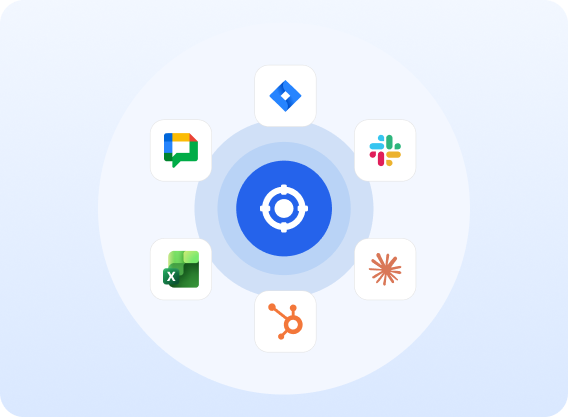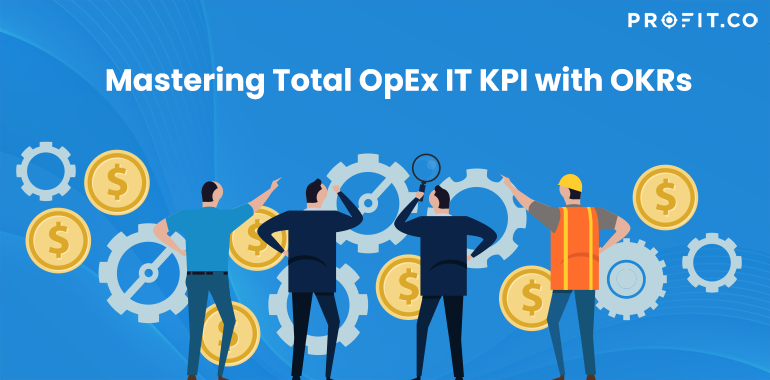What is the Total OpEx IT KPI?
Total Operating Expense (OpEx) IT Key Performance Indicator, often called Total OpEx IT KPI, is a multidimensional metric encompassing all operational expenditures within an IT department or organization. It goes beyond traditional financial metrics, offering a holistic view of the costs associated with IT operations. Total OpEx IT KPI factors in direct and indirect costs, shedding light on the full spectrum of expenses incurred in delivering IT services.To Leverage Total OpEx IT KPI to Drive Your Organizational Goals
The Components of Total OpEx IT KPI & Calculation
1. Direct Costs: These are the direct and traceable expenses directly related to IT operations. They include- Salaries and wages of IT personnel.
- Hardware and software procurement costs.
- Costs associated with maintaining and upgrading IT infrastructure.
- Maintenance contracts for equipment and software.
- Licensing fees for software applications.
- Facility costs, including rent or lease payments for office space.
- Utilities like electricity, heating, and cooling are required to support IT operations.
- Administrative overhead, such as HR and finance department expenses.
- Shared resources that indirectly support IT activities but are used by multiple departments.
- Cybersecurity measures, including the purchase of security software and tools.
- Disaster recovery planning and implementation, including backup systems.
- Compliance initiatives to ensure adherence to industry standards and regulations.
- Experimenting with new technologies and solutions.
- Conducting feasibility studies to understand the viability of IT projects.
- Continuous improvement and innovation culture.

Benefits of tracking Total OpEx IT KPI with real-life examples
Listed below are the key benefits of tracking this KPI.Financial transparency
A retail company uses Total OpEx IT KPI to track its spending on cloud services and in-house IT support. This transparency helps them realize that cloud services are more cost-effective than anticipated, leading to a strategic shift in their IT infrastructure.Price is what you pay. Value is what you get.
Improved budget management
An educational institution, by monitoring its Total OpEx IT KPI, discovers that a significant portion of its budget is allocated to outdated software licenses. This insight leads to renegotiating contracts and redirecting funds toward more critical IT upgrades.Cost optimization
A healthcare provider tracks its IT spending and identifies its need for more utilized data storage solutions. By optimizing their storage strategy, they reduce costs significantly without affecting patient data accessibility.Strategic alignment
A tech startup uses Total OpEx IT KPI to align its IT spending with its growth strategy. They notice a low investment in cybersecurity and, recognizing its importance for business credibility, adjust their spending to enhance their security infrastructure.Competitive benchmarking
A financial services firm tracks its IT spending against industry benchmarks and realizes they are spending less on innovation than their peers. This leads to an increased investment in new technologies, helping them stay competitive in a rapidly evolving industry.Integrating Total OpEx IT KPI with OKRs for Organizational Success
let’s integrate the total OpEx IT Key Performance Indicator (KPI) into the context of OKRs (Objectives and Key Results) to illustrate how they can complement each other in achieving organizational goals. In this example, we’ll focus on how Total OpEx IT KPI can be used as both a Key Result and a KPI within an OKR framework. Objective: Optimize IT Operations Efficiency To enhance efficiency and cost-effectiveness in IT operations, we aim for tangible improvements with specific targets and initiatives. Key Result 1: Reduce Total OpEx IT KPI from 20% to 18% Initiatives:- Conduct a comprehensive audit of current software licenses, identify underutilized licenses, and reduce or reallocate resources accordingly.
- Negotiate with current vendors to lower costs or seek more cost-effective service providers without compromising quality.
- Upgrade to energy-efficient data centers and cooling systems to reduce power consumption and costs.
- Deploy advanced monitoring solutions for proactive detection and resolution of issues before they impact system uptime.
- Invest in more reliable hardware and network infrastructure to reduce downtime.
- Form specialized IT teams for immediate response to critical system alerts, minimizing disruption time.
- Use financial management software for real-time tracking of IT expenditures against the budget.
- Schedule monthly budget review meetings to identify and address any deviations early.
- Cultivate a cost-conscious culture within the IT department through workshops and regular communications on budgeting best practices.




